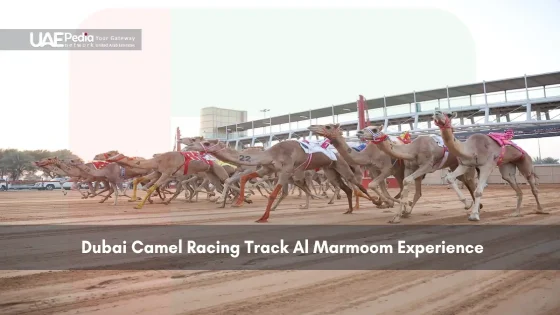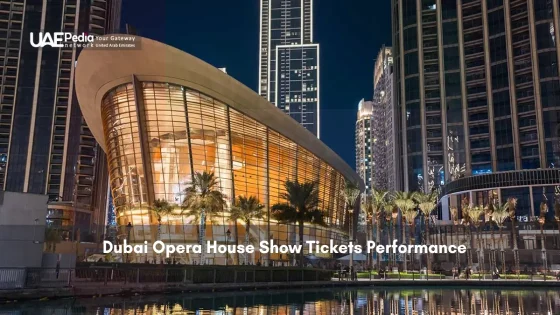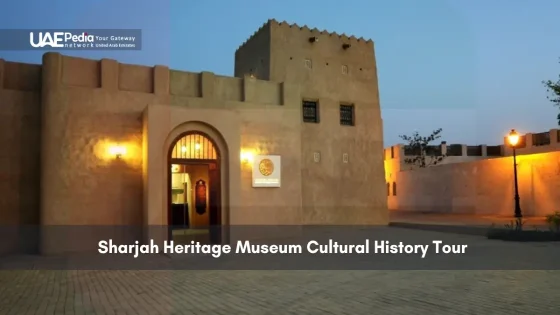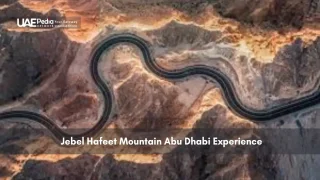What if we told you there’s a place where centuries-old traditions sprint alongside cutting-edge technology—all before sunrise? Welcome to Al Marmoom, where the rhythmic thud of hooves against sand echoes across a landscape steeped in heritage. This isn’t just a sporting event; it’s a sunrise-to-sand spectacle that reveals the UAE’s soul.
Here, sleek camels dash across a sprawling desert track, guided not by human hands but nimble robot jockeys—a perfect blend of Bedouin legacy and 21st-century innovation. Locals and travelers alike gather in grandstands as dawn breaks, sipping karak chai while cheering for their favorites. The energy? Think Kentucky Derby meets Arabian Nights.
We’ll walk you through everything: when to catch the most exhilarating races, how to navigate the venue like a pro, and why packing a light jacket matters (trust us). You’ll discover how this experience connects ancient Emirati customs with today’s adrenaline-chasers—all within a day trip from the city.
Key takeaways:
- Witness sunrise races blending tradition with robot jockey technology
- Insider tips for optimal viewing times and family-friendly amenities
- Step-by-step planning guide covering tickets, transport, and cultural etiquette
Planning Your Visit to the dubai camel racing track al marmoom
Ready to trade city skylines for sunrise thrills? Navigating this desert gem requires smart timing and local know-how. Let’s map out your route so you catch every hoof-pounding moment.
Finding Your Desert Starting Line
Most visitors drive via Al Ain Road—look for low-flying drones marking the race track. Set your GPS to the Dubai Camel Racing Club coordinates (25.0285° N, 55.3693° E). Public buses stop 15 minutes away; ride-hails drop you at golden sand-colored gates.
Pro tip: Follow the 4×4 convoy—owners often trail their camels to the sport’s hub. Parking fills fast, but early birds snag shaded spots near the finish line.
Your Free Pass to Dawn Excitement
No tickets needed—this place welcomes all. Weekend races kick off at 7 a.m., though crowds gather earlier. We arrived at 6:30 last month and scored front-row views of robot jockeys in action.
| Plan Your Day | Best Arrival Time | Pro Tip |
|---|---|---|
| Saturday Races | 6:40–6:55 AM | Park near Tower 2 for quick exit |
| Sunday Races | 6:30–6:45 AM | Bring foldable stools for kids |
The racing action wraps by 9, leaving your day open for other adventures. Pack binoculars—you’ll want close-ups of those final-stretch sprints!
Discovering the Rich Tradition and Modern Thrills of Camel Racing
Centuries ago, the desert’s heartbeat was the thunder of hooves across dunes—a rhythm that still pulses through Emirati veins today. This sport isn’t just about speed; it’s a living tapestry woven with Bedouin pride and 21st-century ingenuity.
From Desert Survival to Global Stage
Long before GPS or grandstands, nomadic tribes bred camels for endurance and loyalty. Races settled disputes and celebrated harvests, with winners earning legendary status. “Our ancestors raced not for medals, but for honor,” shares Ahmed, a third-generation trainer. By the 1990s, what began as village contests became televised events with million-dollar prizes.
When Tradition Meets Tech
The 2002 ban on child jockeys sparked a revolution. Enter robot jockeys—remote-controlled devices weighing just 6 pounds. Trainers now guide their herds via walkie-talkies while analyzing real-time speed data. The shift preserved the sport’s soul while making it safer and more strategic.
| Aspect | Traditional Era | Modern Era |
|---|---|---|
| Jockey Type | Child riders | Lightweight robots |
| Training Focus | Stamina & obedience | Data-driven speed optimization |
| Race Length | 2-3 km (informal) | 4-10 km (standardized tracks) |
Today’s events blend old and new seamlessly. Spectators sip Arabic coffee beside holographic leaderboards, cheering as robot-wielding handlers sprint alongside their camels in final stretches. It’s this dance between heritage and progress that makes every race a chapter in the UAE’s unfolding story.
Exploring the Spectator Experience: Facilities, Views, and More
Picture this: golden sands erupting with thundering hooves as dawn paints the sky—your front-row seat to a cultural adrenaline rush. The energy here crackles like popcorn, with families leaning over railings and trainers shouting encouragement through walkie-talkies. Whether you’re a first-timer or a seasoned fan, every corner of this desert arena feels designed to pull you into the action.
Family-Friendly Attractions and Kid Engagement
Kids’ eyes widen as robot jockeys zoom past—think mini Transformers riding desert speedsters. Shaded play zones dot the venue, with local artisans teaching beadwork between races. “My daughter made a bracelet while cheering—best souvenir ever!” shares frequent visitor Layla. Stroller-friendly paths and snack carts serving date smoothies keep tiny humans happy (and parents sane).
Insights on Grandstand Views and Amenities
The main stands curve like a crescent moon around the race track, offering unobstructed sightlines. Grab seats near Tower 3 for shade during later races, or head to the open-air middle section for 360-degree drama. Safety rails line every level, and staff distribute cooling towels when temperatures rise.
| Seating Area | Best For | Pro Tip |
|---|---|---|
| North Stand | Photographers | Sun at your back for morning shots |
| Central Tower | Families | Quick access to restrooms |
| Finish Line | Thrill-seekers | Feel the sand spray as camels sprint past |
Even the snack stands double as cultural pit stops—sip karak chai while watching handlers prep their champions. As one Emirati trainer told us, “The sport isn’t just in the race—it’s in the shared smiles across the stands.”
Practical Tips for a Successful Day at the Track
The desert dawn doesn’t wait—but neither should you. Nailing your visit requires more than just showing up. Let’s break down the secret sauce for a seamless experience where culture meets adrenaline.
Timing Your Visit for Optimal Experiences
Arrive by 6:15 AM to beat both the heat and the crowds. Weekday events tend to be less packed, but weekends buzz with local energy. “The third race always has the fiercest competition,” whispers a regular spectator we met near the refreshment stands.
| Race Day | Arrival Time | Why It Works |
|---|---|---|
| Friday | 6:00–6:20 AM | Watch trainers prep their stars |
| Saturday | 6:15–6:30 AM | Prime photo light + front-row spots |
Packing Essentials and Local Etiquette
Your desert survival kit: sunscreen (reef-safe), a wide-brimmed hat, and a refillable water bottle. Light layers work best—mornings start cool but heat up fast. Keep small bills handy for fresh-squeezed juices from mobile vendors.
When capturing memories, always ask permission before photographing handlers. Modest clothing shows respect for local traditions—think knee-length shorts or lightweight pants. And here’s a pro tip: Pack dates or nuts to share. This simple gesture often sparks conversations with Emirati fans nearby.
Final hour advice? Download the venue map beforehand. Signal can be spotty once you’re trackside. With these tricks up your sleeve, you’re not just watching a sport—you’re living its rhythm.
Reflecting on Your Al Marmoom Adventure
As the final cheers fade, you realize this wasn’t just a morning at the races—it was a front-row seat to living history. From that first glimpse of robot jockeys darting across dawn-lit sands to sharing stories with fellow spectators, every moment etches itself into memory. The blend of age-old traditions and whirring tech doesn’t just entertain; it connects you to a culture thriving in modern times.
Think back to the energy—the crowd’s roar as hooves kicked up golden dust, kids mimicking robot controllers, elders nodding approval at record speeds. These races aren’t merely sport; they’re a heartbeat of heritage. That karak chai in your hand? It tasted sweeter here, surrounded by shared excitement.
Before you leave, snap one last photo of the glowing horizon. Tag it #DesertSpeed—we’ve seen visitors spark envy in friends back home with less. And when someone asks about your trip, tell them how every second mattered: the strategic pauses between sprints, the handlers’ proud smiles, the way time seemed to bend around each thrilling lap.
Bookmark those planning tips for next season. Newcomers might catch their first camel race, but repeat visitors uncover deeper layers—the way morning light shifts on the course, or how each animal’s stride tells a story. This place doesn’t just host events; it crafts chapters in your travel diary where past and future gallop side by side.
Aim to arrive 30-45 minutes before races start. Early birds snag shaded grandstand spots with clear views of the track’s sandy curves. Weekends and cooler months get busiest—plan ahead!
Yes! Traditional child jockeys were phased out in 2005. Today, lightweight remote-controlled bots—weighing under 2kg—steer the camels, blending heritage with tech innovation. You’ll spot their colorful vests zipping across the track.
Absolutely. Interactive zones offer camel-themed crafts, mini races with plush toys, and storytelling sessions about Bedouin traditions. Check event schedules for workshops during major desert festivals!
Opt for lightweight, loose clothing covering shoulders and knees. Sunglasses and hats are wise—sun glare off the dunes is real! Comfortable shoes handle sandy paths between grandstands and food stalls.
A>: Yes—grab karak chai, fresh dates, or shawarma wraps from kiosks. For fuller meals, nearby Al Lisaili village has Emirati restaurants like Al Fanar. Pro tip: Bring a reusable water bottle—hydration stations abound!
Morning races often wrap by 10:30 AM, with competitions spanning 5-8km. Championship meets can run longer—up to 3 hours—with parades, prize ceremonies, and breeder meet-and-greets adding to the buzz.



















